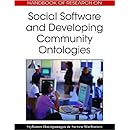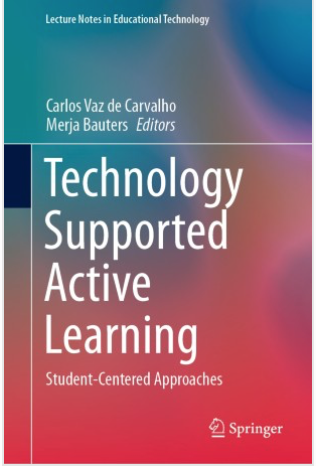I am preparing the virtual lecture “Ecology of learning with new media tools” for the master of semiotics program in Helsinki University for the course “Semiotics and media, sciences and technology studies”.
I was looking one article that was inspired by the Lakoff’s book “Metaphors we live bye”.
It assumes that we live by metaphors that actually structure our perceptions and understanding
Our conceptual system, thus, plays a central role in defining our everyday realities. If we are right in suggesting that our conceptual system is largely metaphorical, then the way we thinks what we experience, and what we do every day is very much a matter of metaphor.
Interesting in this paper is the assumption that metaphorical concepts that we use form a system.
TIME IS MONEY, TIME IS A LIMITED RESOURCE, and TIME IS A VALUABLE COMMODITY are all metaphorical concepts. They are metaphorical since we are using our everyday experiences with money, limited resources, and valuable commodities to conceptualize time. This isn’t a necessary way for human beings to conceptualize time; it is tied to our culture. There are cultures where time is none of these things.
I started to think if there exists also the personal system within the affordances that we potentially actualize in interaction with the world.
My idea seems not to be exactly the same as affordance network idea conceived by Barab and Roth (2006). Particularly it is elaborating this part where environmental knowledge is used.
Barab and Roth (2006) have noted that connecting learners to ecological networks, where they can learn through engaged participation, activates the affordance networks.
Barab and Roth (2006) assumed that affordance networks are not read onto the world, but instead continually “transact” (are coupled) with the world as part of a perception-action cycle in which each new action potentially expands or contracts one’s affordance network.
Basically i think that:
a) if affordances are our perspectives, the positions that we take in the moment of action/emotion in the multidimensional geo-conceptual hybrid space consisting of conceptual dimensions and geographic dimensions (Pata, 2010; Normak, Pata, Kaipainen, forthcoming), then

b) there exists the personal spatial area within geo-conceptual hybrid space that is frequently defined by these positions
This personal spatial area (a cognitive niche) is simultaneously activated internally and externally as the cognitive distributed space during the cognitive chance-seeking (Bardone, 2010), and people are always “validating” the effectiveness of this space for affording their actions and emotions.
c) and within this personal space WE CAN FIND CONSISTENCY of what dimensions of the space are incorporated into certain affordances as personal perspectives useful for certain action or emotion
d) The accumulation of individual positions within this space (to the geographical and virtual object world and to the interpersonal relational actions) contribute to the formation of the cultural spaces – the niches within geo-conceptual hybrid space.
So some of the affordances are offloaded to the objects which are spatially located, some affordances are run dynamically in the awareness of the persons who are interacting and keeping awareness of bodily and emotional activations of each other and with the object world.
We may have several of such taskspaces.
Taskspace is an array of activities related to a certain environment (Ingold, 2000). A taskspace fosters a range of affordances of an environment, delimiting some and enabling others (Edensor, 2004).
e) Cultural niches within geo-conceptual hybrid space are used by individuals for spatial navigation while they select the positions in their own spaces (basically cultural niches can prompt or inhibit some dimensions that the person can use in the geo-conceptual hybrid space for actualizing affordances.

(dataset and image from Pata, 2009)

Image indicates the community perception of affordances for using an aggregator tool.
Part of the problem is how effectiveness of taking action or having emotion is evaluated by each individual in respect to the community niche, and how such effectiveness may be accumulated to the niche.
If the (geo)tags used for defining some conceptual artifacts are interpreted as the dimensions of the geo-conceptual space (for example if we look blog posts, or bookmarks), there exist some dimensions that are the root- or central dimensions, and other dimensions are additional dimensions.
The pictures of tag-networks allow us to see the “hubs” (root-dimensions) in this multidimensional space.
Here is the affordance dimension network based on my dataset (Pata, 2009a,b). I have used the Bayesian networking tool for finding the best fitting causal model for collaborative activity taskspace with social software tools.

From the previous spatial dimension figure we can see that monitoring is the most frequently perceived affordance of the aggregator. The other affordances frequently perceived while using aggregator are: filtering and mashing; collecting; reading; and evaluating.
We may assume that in the collaborative activity taskspace with different types of social software tools, the monitoring affordance in general is related with searching and evaluating and reading.
The arrow to reading indicates causality that actualizing monitoring affordance allows in turn reading affordance.
Following the same idea of spatial re-location while taking action and having emotion, Lackoff said about conceptual metaphors that Another functionality for metaphors is orientation in space.
I’m feeling up. That boosted my spirits. My spirits rose. you’re in high spirits. Thinking about her always gives me a lift. I’m feeling down. I’m depressed. He’s really low these days. I fell into a depression. My spirits sank.
Lakoff and Núñez suggest that conceptual metaphors form network of bodily grounded entities with inferential organization.
In his book “Philosophy in the Flesh : The Embodied Mind and Its Challenge to Western Thought” Lakoff and Johnson (1999) conceptualized living by metaphors using the embodied mind idea.
“our bodies, brains, and interactions with our environment provide the mostly unconscious basis for our everyday metaphysics, that is, our sense of what is real.”
Together with the “father” of embodied simulation Vittorio Gallese George Lakoff wrote and article “The Brain’s Concepts: The Role of the Sensory-Motor System in Conceptual Knowledge.” (2005).
The argue against the cognitive processing
A common philosophical position is that all concepts—even concepts about action and perception—are symbolic and abstract, and therefore must be implemented outside the brain’s sensory-motor system.
and suggest embodied simulation, assuming that
“sensory-motor regions of brain are directly exploited to characterise the so-called “abstract” concepts that constitute the meanings of grammatical constructions and general inference patterns.”
In the recent book “Embodied cognition” Shapiro distinguishes three important themes in embodied cognition (Shapiro, 2010):
Conceptualization – the properties of the organism’s body constrain which concepts an organism can acquire.
Replacement – the organism’s body in interaction with the environment replaces the need for symbolic representational processes. (systems do not include representational states)
Constitution – the body or world plays a constitutive role rather than causal role in cognitive processing.
I am thinking of two interesting aspects:
How is personal cognitive niche/a cultural niche a coherent referential network?
A person can offload some of the affordances to the environment using some artifacts, so the community niche may form and be reused for personal cognitive navigation?
A person interacts with other people directly and the monitored actions and emotions actualize temporarily parts of the community niche as well, which may be used for navigating in personal cognitive niche
How are some dimensions in the geo-cognitive space highlighted among others, and which are in principle these “spaces of flows” within cultural/community spaces and how one person is immersed to these flows.













